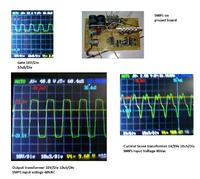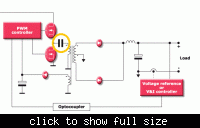zeus_threat
Member level 2

Hi thanks luben and kabiru for replying. I got a current sense transformer in series with the main transfo. The waveform almost triangular with peaks rounded with a small sort of dead time in between them. I can ttry to take a pic of it and post it here. For the frequency, the IC is set to 50KHz so the Mosfet should be switching at 25KHz









